Where in the World are Margie and Peter? Sandakan War Memorial

Peregrina's Journey
Peter and Margie Benziger
Fri 24 Aug 2012 04:02
"Lest we forget..."
Traveling around the world as we have aboard Peregrina usually means experiencing the
idyllic life of beautiful beaches in exotic destinations with spectacular
scenery and warm, friendly people. We are treated as honored guests in the countries
we visit and we are wined and dined with much celebration and goodwill.
However,
there are also times when we witness the clash of cultures and ideologies around
the world and we re-live parts of history that have a very sad tale to tell. Not long ago, we were humbled and privileged
to attend a memorial service in Sandakan, Malaysia for the brave soldiers from
Australia and Britain who died in the Death Marches in Borneo at the end of
World War II.
.
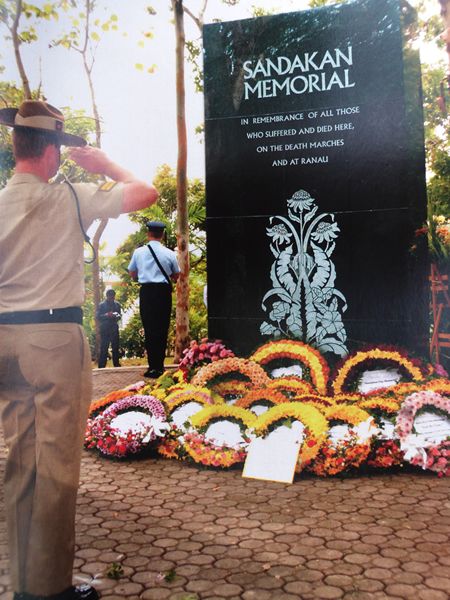
Attending
this memorial service brought us face-to-face with the horror of war and the
toll it took on those courageous young soldiers who proudly represented their
countries - bearing arms to defend freedom around the world.
For
many participants on the Sail Malaysia Rally from Australia and Great Britain,
it was an opportunity to pay their respects to relatives and countrymen who had
served during WWII. Peter and I eagerly
joined the contingent of yachtsmen in two mini-vans headed for the ceremony. We all signed in with the help of the Girl Guides
of Malaysia.
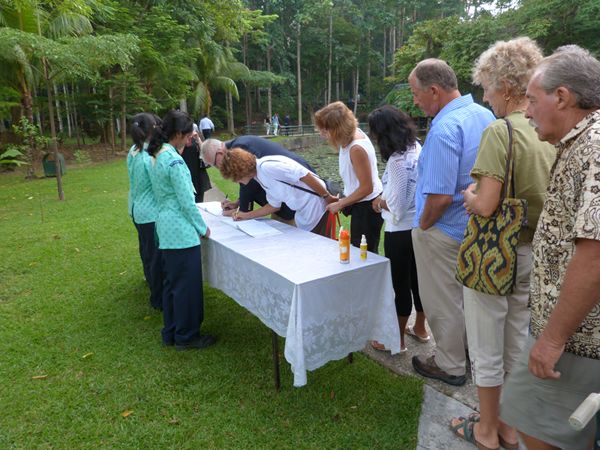
This
incredibly moving service was held at the site of the POW Camp in Sandakan that
housed 2700 servicemen captured by the Japanese in 1942 during the Battle of Singapore.
It was known as 8 Mile Camp as it was eight miles from the city of Sandakan. The
soldiers, approximately 2000 Australians and 700 from the UK were confined here
by the Japanese under horrific conditions and forced to build an airstrip. Mostly enlisted men, they were not much older
than boys. All the officers had been
moved to a POW camp in Kuching in order to leave those in Sandakan leaderless and easier to
control.
The prisoners were malnourished and disease-ridden with malaria, dysentery,
beri-beri and tropical ulcers. They were
beaten and tortured and worked constantly under threat of gunpoint and
bayonet. Those who fell and could not
rise were brutally murdered. One soldier
remembered it this way…“In the morning,
when the men were too weak to stand, we used to shake hands with them and say
goodbye as they more or less knew what was going to happen.”
Close
to the end of the war in 1945, the airstrip was bombed by the Allies and the
Japanese burned everything else that was left standing after sending the strongest
of the 1400 remaining prisoners on a series of three Death Marches from
Sandakan to Ranau, near the base of Mount Kinabalu - 165 miles to the west. The arduous trip began in marshland,
continued through dense jungle and finally ended in the mountainous terrain of
Borneo’s highest elevations.
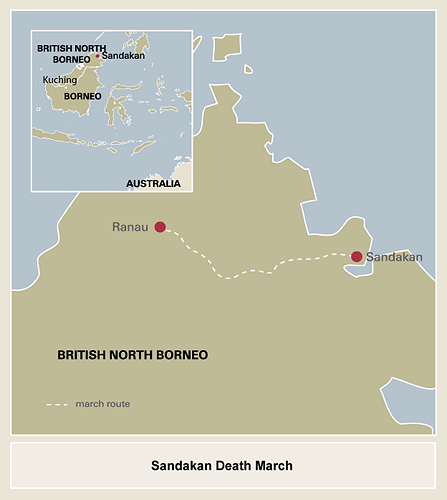
The
soldiers carried heavy baggage and supplies for the Japanese battalions at
gunpoint. The first March was conducted
in groups of fifty between January and March of 1945. The Japanese set a blistering pace, averaging
of 17 miles a day for 9 days with little rest and only 70 grams of rice per
person cooked in polluted waters. Of the nearly five hundred who began the
first March only about half of them made it to Ranau.
The second March took longer (approx. 26
days) as the prisoners were weaker and given even less rations. Miraculously, out of five hundred, 183
arrived in Ranau but, to their dismay, they found only six men (5 Aussies and 1
Brit) from the first March still alive. The third March began on June 9, 1945 with
just 75 men who were so sick and emaciated that none survived more than 31
miles.
One survivor wrote, "All the way along the track we smelt and saw bodies. They were Australian soldiers' bodies from the previous marches. We could recognize them - some we knew personally. In all my dealings with the Japanese, I have never seen anyone of our chaps after they have been left with the Japs. Once you stopped, you stopped for good."
One survivor wrote, "All the way along the track we smelt and saw bodies. They were Australian soldiers' bodies from the previous marches. We could recognize them - some we knew personally. In all my dealings with the Japanese, I have never seen anyone of our chaps after they have been left with the Japs. Once you stopped, you stopped for good."
The 300
enlisted men who were too sick to leave 8 Mile Camp in Sandakan now had no shelter or food. They either died of
starvation and illness or were murdered before the Japanese surrender so as to
leave no evidence behind. Those who made
it to Ranau continued to be brutally treated by the Japanese and, by the end of
July, there were only
38 prisoners still alive – all starving and much too sick to do any work. It
was ordered that they should be shot. They were
killed by the guards in August 1945, possibly up to 12 days AFTER the war officially
ended! As far as the Japanese were
concerned, there was to be no
record of the atrocities that were committed in Sandakan or on the Death
Marches to Ranau.
But, in
the end, there WERE six Australians alive - out of 2,700 men - and that’s only
because they had managed to escape. Two
escaped during the second March and were assisted by local Malaysians until
they were picked up by Allied units.
Four others escaped from Ranau in July 1945. They hid in the jungle and were fed and cared
for by locals until the end of the war.
These brave young men were able to testify in court against their
tormentors to ensure that the world received eyewitness accounts of the crimes
and atrocities committed against them. See three of the six below left to right: Private Nelson Short, Warrant Officer William "Bill" Sticpewich and Private Keith Botterill.
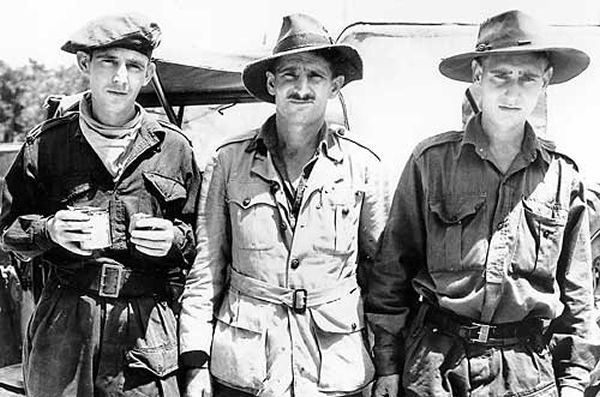
As a result of their testimony, Camp Commandant Hoshijima Susumu was found guilty of war crimes
and hanged on April 6, 1946. Captain Takakuwa and his second-in-charge, Captain
Watanabe, were found guilty of causing the murders and massacres of
prisoners-of-war and were hanged and shot on April 6, 1946 and March 16, 1946,
respectively. However, nothing can undo the slaughter of those
servicemen denied their rights under the internationally recognized code of
conduct for prisoners of war outlined in the Geneva Convention.
Lest we
forget…The Returned & Services League of Australia with support from the Malaysian
government here in the State of Sabah has created Sandakan Memorial Park, a
commemorative area on the site of the Australian B Force Compound at 8 Mile
Camp. Each year, on August 15th
a memorial service is held here. It is a
beautiful tribute to those fallen soldiers and attended by hundreds from around
the world.
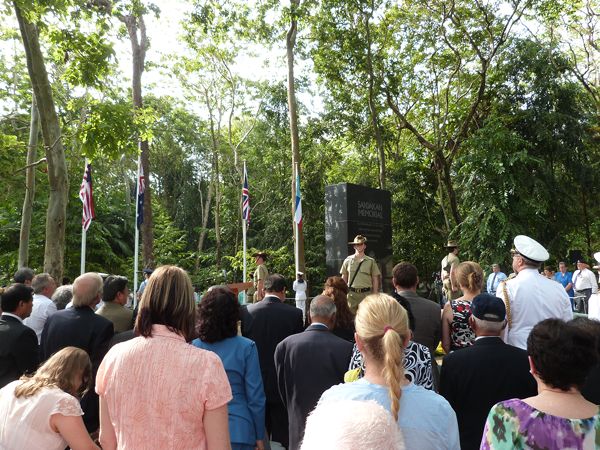
They come wearing medals – some they earned themselves in service to their country, some awarded posthumously to their relatives who served here in Borneo.

They come wearing medals – some they earned themselves in service to their country, some awarded posthumously to their relatives who served here in Borneo.
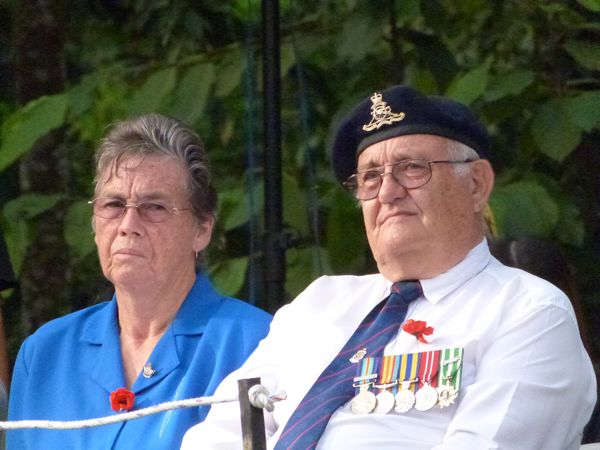
The
service began with a catafalque party of Australian servicemen (sentries) who
stood silently with heads down and hands crossed as a unique sign of respect to
the memory of a great soldier(s). They didn’t move an inch during the entire two-hour
service.
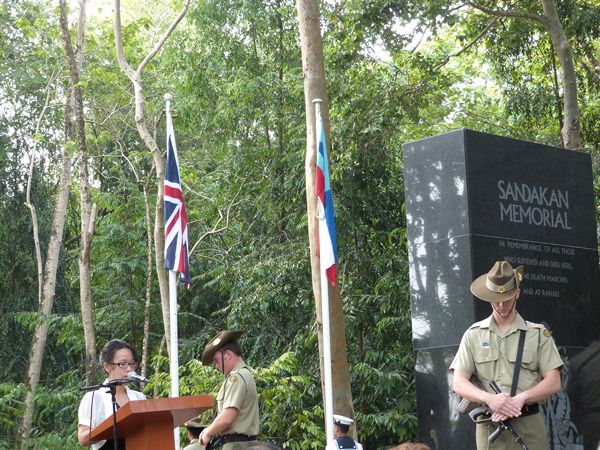
After
the formal welcome addresses from representatives of the Malaysian, Australian
and British government, the Royal Navy’s Defense Advisor to Malaysia from
Britain and Defense Attache to Malaysia from Australia, we heard heart-breaking
remembrances about the veterans from family members including Steffoni
Brackenbury, 77, who was six years old when she last saw her father, Engineer
Ted Keating, who died in 1944 after a failed escape attempt in Sandakan. She wore his medals so proudly and described
him as “…a rather likable larrikin, a great mate, also a loving husband to our
mum, Olive and a devoted father to his two young children.” He called her “Bubbie.”
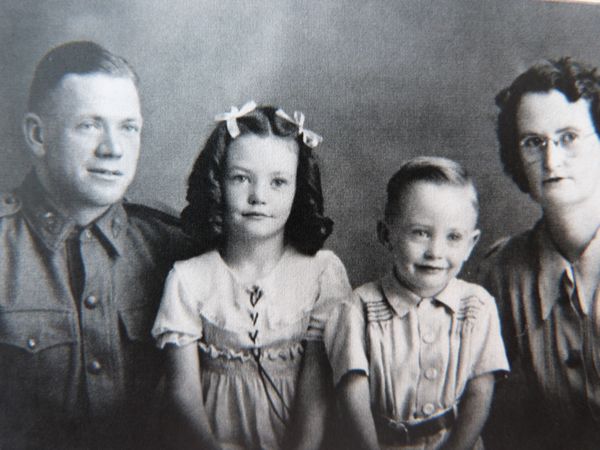
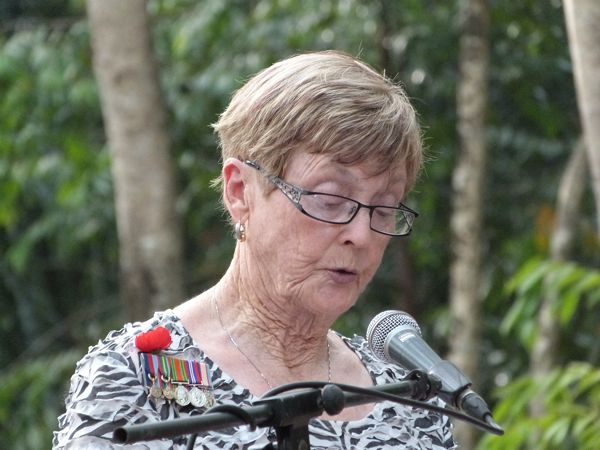
There
were letters and songs and poems written by family members and, in some case, the
soldier’s themselves, long ago. A young
boy read a poem written by his grandfather, Lieutenant Jon Cleary from
Australia titled “If You Go Home…”
“If you go
home…
Tell them
this for me:
That in that
final age-long moment,
I remembered
these:
Children’s
voices, laughing and gay;
A full-moon
night and a soft blue day;
A bird
singing in a tree in bloom;
Soft wind on
long grass and clouds that loom;
Trains
brightly lit, neons and a ship’s riding light,
Street-lamps
climbing a hill: now, miracles in the night.
I can’t go
home…
That’s why I
ask you,
To tell them
this from me:
I remembered
her beside me,
Her kiss,
her close-pressed warmth. And I
Felt still
the agony sweet of our last good-bye.
Tell them
this and tell them
Not to
grieve for me. Tell them that though I
remain
Here among
the blood-covered mud-smeared slain,
I am proud
to have died for these things.
I ask you to
tell them this for me
If you go
home…"
And
then, one final salute.
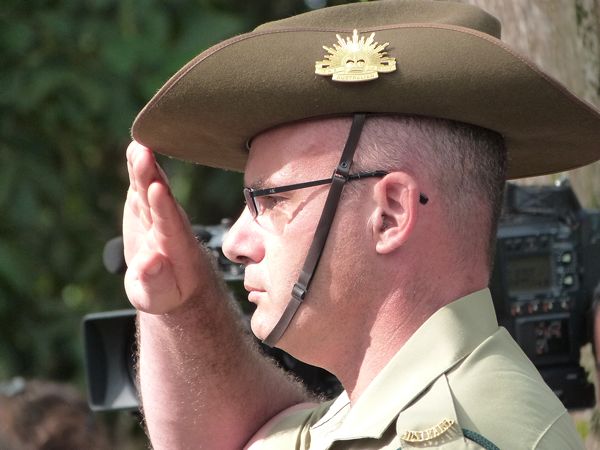
Rest in
peace…